| We arrived in Berlin around mid-morning and to our astonishment our hotel room was ready for us. Points to Viking for making that happen. So we freshened up and rested a little and then were ready to hit the town for our first day of exploring. The hotel was close to everything so we walked down to Checkpoint Charlie. |
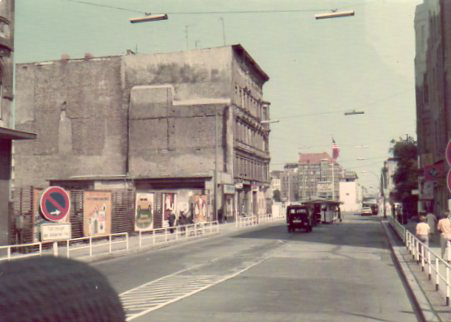 |
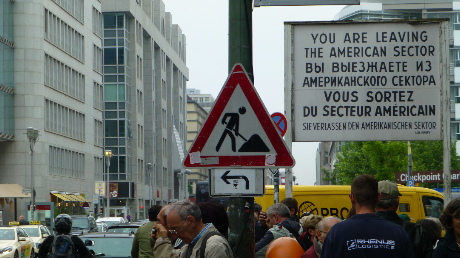 |
| This is Checkpoint Charlie from Pat's trip in 1974--a fortified guard station on a deserted street. |
This sign is only for show now--but it meant something then. |
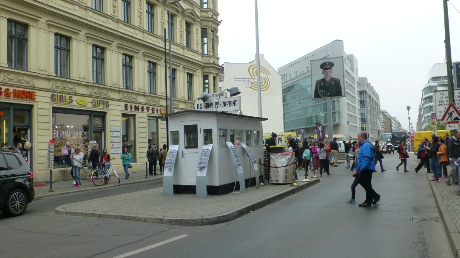 |
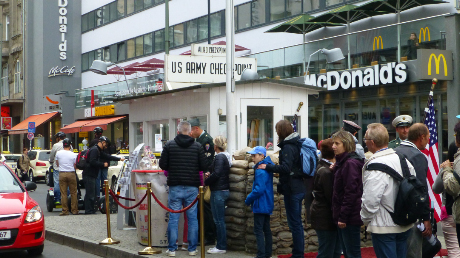 |
| Now Checkpoint Charlie is a huge tourist draw, very commercialized. You can even get pictures with American and Soviet "guards." But it is good to see the freedom of movement across the old border. |
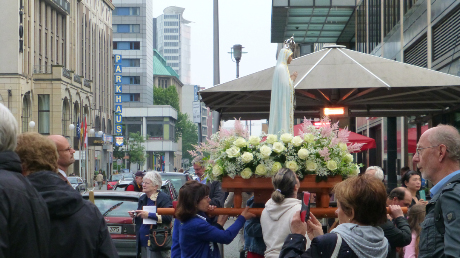 |
 |
| Gendarme Square next to our hotel (which was in East Berlin, by the way) included the French Church. One evening there was a huge procession with a statue of Mary to celebrate the Feast of Corpus Christi. We haven't seen that many nuns and priests on one place since Rome. As you can see, there were also a lot of young people participating. |
 |
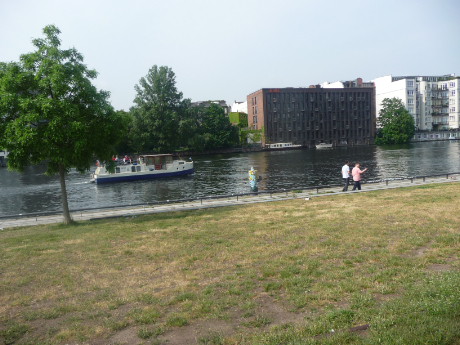 |
| Also in the square was the Concert Hall, a fine old building restored after the war. |
This river and park mark where one part of the Berlin Wall was. Several people were shot trying to swim across the river after getting over the Wall. |
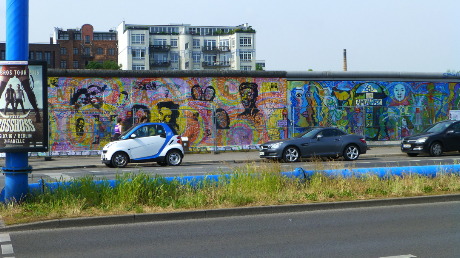 |
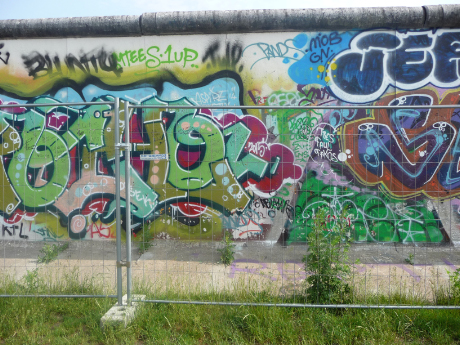 |
| This is a piece of the original Wall that separated East and West Berlin which is now a favorite canvas for graffitti artists. |
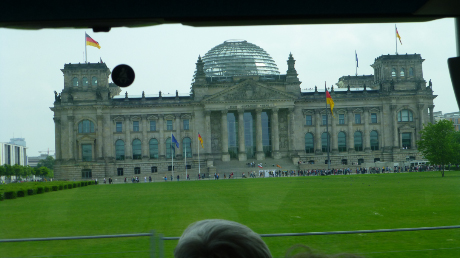 |
 |
| The Reichstag, home of the German Parliament. |
The Brandenburg Gate is probably the most recognizable site from Berlin. Originally it was at the edge of the city and the sculpture represents Victory entering the city. During the division, Victory was leading out of West Berlin and into East Berlin, which shows how accurate that kind of symbolism is. |
 |
 |
| Two views of the Brandenburg Plaza from the east side, one from 1974 and one from 2016. What a difference it has made! |
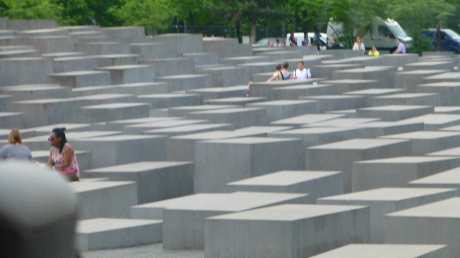 |
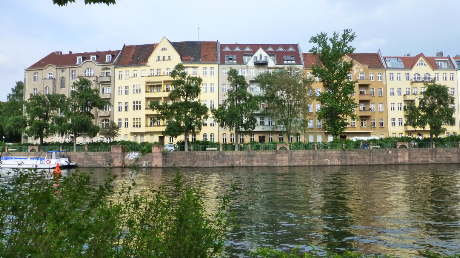 |
| This is a monument to the Jews of the Holocaust. It is an interesting concept: when you are inside you can see where you are but every way you turn you are confronted by a blank wall. |
Parts of West Berlin have been well-preserved, like these (expensive) apartments along the river. |
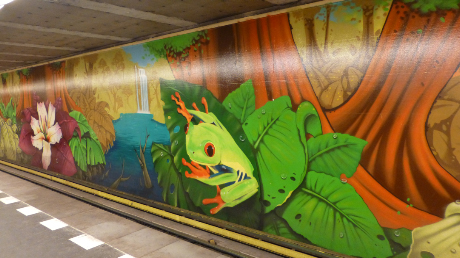 |
 |
| The U-Bahn (Underground) stations are each decorated in a different theme. This one had an environmental mural. |
The Kaiser Wilhelm Church was badly damaged in WWII and for many years it just stood as an abandoned hulk. Now the towers have been rebuilt but the interior is still mostly gone. |
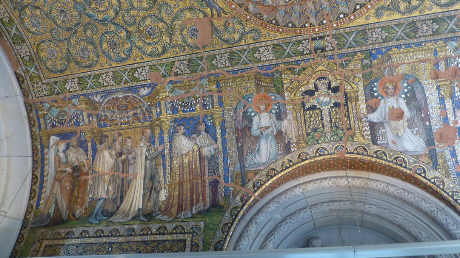 |
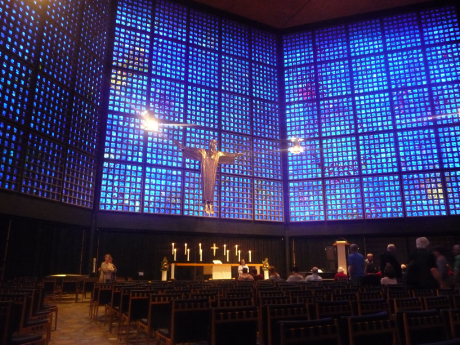 |
| There has been some reconstruction of the beautiful murals in the original church, but only enough to give an idea of its original beauty. The rest has been left as a memorial. |
Next to the original Church the parishioners have build a new sanctuary. |
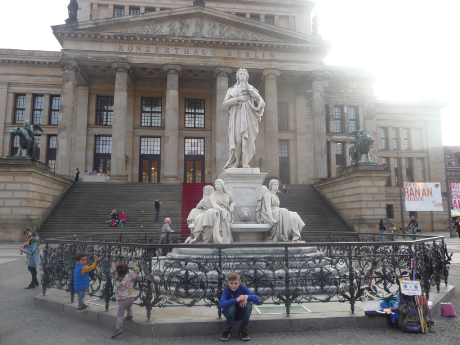 |
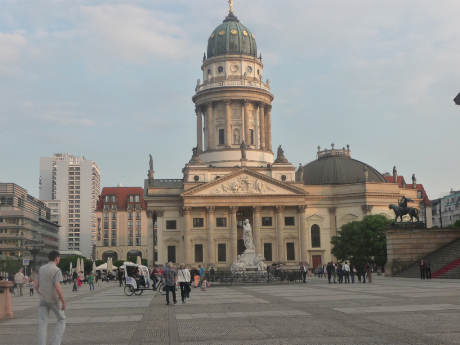 |
| The State Concert Hall from Gendarme Square, near our hotel. This statue is Schiller. |
The French Cathedral, also in the Square. Berlin was very welcoming to the Huguenots as they fled France. |
 |
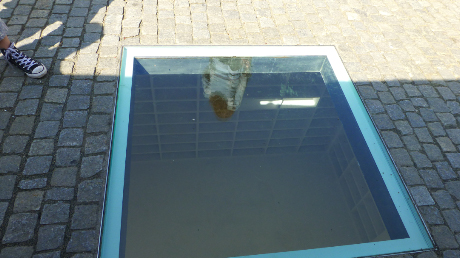 |
| On May 10, 1933 the Nazis held a huge book burning in Berlin, where they destroyed books they considered "unGerman." These included writings by leading German intellectuals, Communist writers, and such "subversive writings" as Ernest Hemingway and Helen Keller. The empty shelves are a remembrance. |
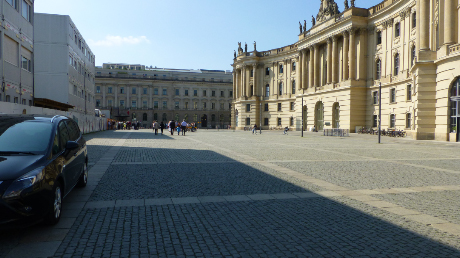 |
|
| |
|
























